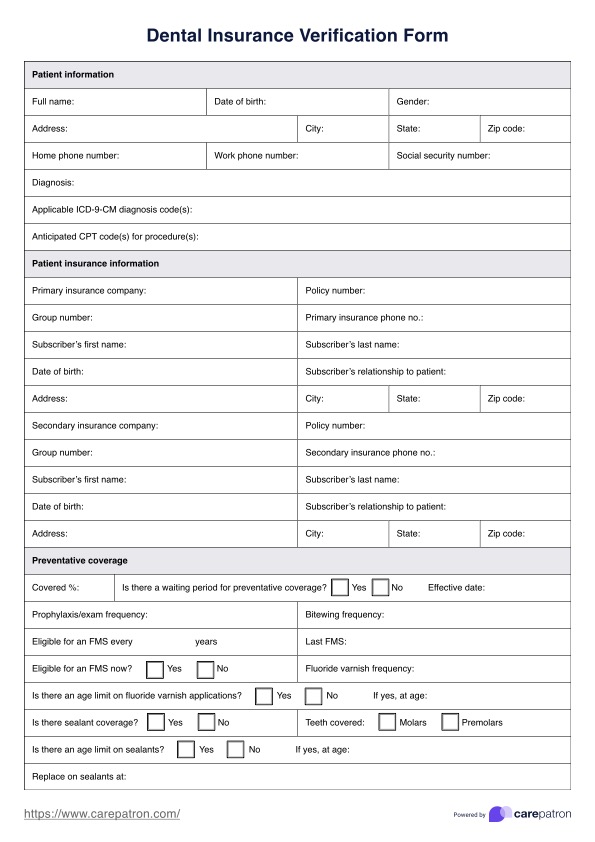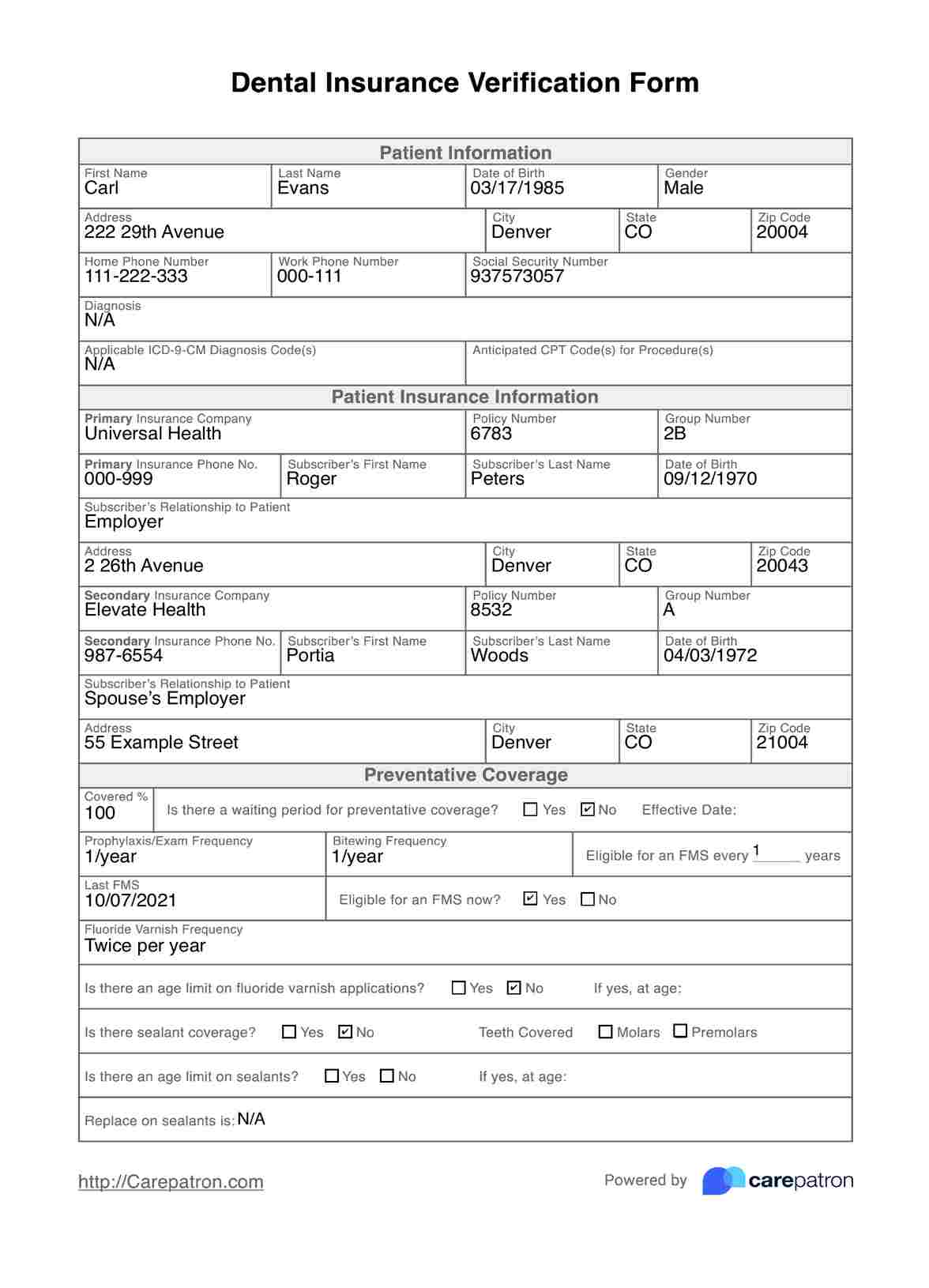
Access this dental insurance verification form and elevate your billing process. Intuitively designed and easily used, this template will help you receive timely reimbursements.

By Wynona Jugueta on Jul 17, 2024.


A dental insurance verification form is a document that is completed when a new patient signs up to receive treatment at a dental practice. Essentially, these forms gather information pertaining to a patient’s insurance provider so the practice can validate it prior to the patient receiving treatment services. When it comes time for billing, the dental practice will already have all of the information they need to process accurate and timely claims, which should result in a reduction in denials. The medical billing process can quickly become complicated and time-consuming, so utilizing resources like an insurance verification form is in the best interest of both dental practitioners and patients. To help make this process as seamless as possible, we have created an intuitive and well-designed that can be accessed, downloaded, and distributed with ease. The template allows you to quickly gather all of a patient’s insurance information, so you can spend your time developing an effective treatment plan rather than worrying about billing. In this guide, we’re going to show you how you can implement this form within your practice, before outlining some of the many benefits it will result in. Let’s get started!
PDF Template Example PDF

Fortunately, using this dental insurance verirfication form template is very simple, as long as you follow this step-by-step guide.
Naturally, the first thing you need to do is access the insurance verification form. If you click on the link that is displayed on this page the document will open in a PDF reader. From here, you should download the template onto your device where it can either be distributed electronically or printed into a physical copy.
When a patient signs up to receive treatment at your dental practice, you need to distribute the insurance verification form to them. The template includes patient personal details as well as insurance information, so it’s easiest to allow patients to complete it themselves. There may be some sections that the patient is unsure about, and these can just be filled in by you when the form is returned.
This step is likely the most important part of the process. After the patient returns the completed insurance verification form, you need to validate the information. There are a few ways that you can go about this. The old-school, more traditional method of verifying insurance is to directly call the insurance provider and confirm details with them. If this doesn’t work for you, you can also search online insurance directories that display this information – just make sure that the directory is up-to-date. Finally, you may have software in place at your dental practice that automates the verification process by validating patient insurance for you. This last option is highly efficient and allows you to essentially hand off the validation process.
Finally, when the patient’s insurance information has been verified, you need to upload the relevant data to your EHR system. This ensures that the data can be easily accessed when it comes time to submit your claims, and also allows you to maintain an accurate client file.
As the title suggests, our dental insurance verification form has been designed with dental practitioners in mind. That being said, this form can also be used by nurses working at a dental practice, or dental hygienists. Additionally, the verification form
can be implemented within a wide range of different healthcare facilities, including:
Because the form has been specifically developed for this field of healthcare, it will work best at the practices listed above. That being said, if your workplace isn’t in this list, that doesn’t mean you can’t use the form. If you are verifying a patient’s insurance information and work within the dental industry, then this resource can definitely be applied!
The dental industry is fast-paced and often stressful. In addition to clinical services, dental practitioners are required to complete various administrative tasks that can be time-consuming. We understand this environment, and have ensured that our verification form has a range of different uses, including the following:

Additionally, using an insurance verification form in your dental practice will result in many different benefits, for individual practitioners, the practices where they work, and the broader healthcare industry. These benefits include:
By using a verification form template, you can reduce the administrative workload. Traditionally, administrative staff would call patients and ask them for their insurance details, a process that often results in playing phone tag and having to chase down patients who don’t return your calls. This form is designed to be largely completed by your patients, which will not only reduce your workload but also hopefully contribute to more accurate data.
If you choose to send patients a link to an electronic copy of the verification form prior to them coming into the practice on the day of the appointment, the workflow will remain efficient and patients won’t have to spend as much time in the waiting room. Patient satisfaction is an extremely important aspect of healthcare, and ensuring they have a seamless experience on the day of their appointment will help improve your patient relationships.
The patient experience will be further improved if you focus on being financially transparent. When you verify insurance information, you will have a more accurate understanding of how much the patient can expect to pay upfront, and communicating this information helps establish trust from the get-go.
Everyone in healthcare knows how frustrating it is when you experience claim denials. To help mitigate this, you should invest in tools that reduce this likelihood: which is what verification forms aim to do. With a streamlined collection of insurance information, you can ensure that the claims you submit are both timely and accurate, leading to faster reimbursements.
Finally, using an insurance verification form will result in your practice gathering more accurate patient data. Storing accurate patient data is important for many reasons; medical coding and billing, inter-department communication, and coordination of care. Better data accuracy leads to better decision-making and of course, better clinical outcomes.